
- school Campus Bookshelves
- menu_book Bookshelves
- perm_media Learning Objects
- login Login
- how_to_reg Request Instructor Account
- hub Instructor Commons
- Download Page (PDF)
- Download Full Book (PDF)
- Periodic Table
- Physics Constants
- Scientific Calculator
- Reference & Cite
- Tools expand_more
- Readability
selected template will load here
This action is not available.


1.3: Environmental Geology
- Last updated
- Save as PDF
- Page ID 25498

- Steven Earle
- Vancover Island University via BCCampus
Earth System Science is an important part of Environmental Geology, and so interaction between systems is considered in almost every topic covered in this textbook. But Environmental Geology is about much more than Earth System interactions.
Environmental Geology is about the interface between geological processes and the environment, and we can choose to use a broad definition of “the environment”. In this textbook that covers all types of Earth Systems, including systems involving the biosphere (or ecosystems if you like); systems of the hydrosphere and atmosphere, such as the hydrological cycle and glaciation; and systems of the geosphere, such as volcanism, earthquakes and slope failure. But it also includes human activities that have implications for the geosphere (and hence the rest of the Earth System), such as mining, energy resource extraction, and waste disposal: into the ground, into water and into the air. The major topics considered here (apart from a review of Physical Geology in Chapter 2 ) are as follows:
Chapter 3: Geological Control Over the Earth’s Climate. Climate change is the most significant issue of our time, and in order to understand how we are changing the climate now we need to know how it has changed naturally in the past. We will look back in time to consider the geological and other processes that have controlled our climate over the past 4.6 billion years. These include long-term changes in the sun, evolution of living organisms, continental positions, mountain building, changes to ocean currents, volcanic eruptions, variations in the Earth’s orbital shape and tilt and collisions with extra-terrestrial objects.
Chapter 4: Glaciation. Glaciation has significant implications for topography and surficial materials and the extent, motion and melting of glaciers are important aspects of the Earth System. In this chapter we will consider some of the Earth’s past glacial periods, the persistent cooling over the Cenozoic, and the cyclical controlling factors of the Quaternary glaciations. We will compare continental and alpine glaciation and will examine glacial erosion landforms and glacial deposits and their implications for other aspects of Environmental Geology.
Chapter 5: Slope Failure. Plate motions and volcanism create steep slopes and those slopes are subject to the pull of gravity. In looking at slope failure we will consider forces on slopes, the natural angle of repose of loose materials, the importance of water, types of failure motion, classification of slope failure, the implications of glaciation for slope failure, triggers for slope failure, and implications of climate change for slope failure.
Chapter 6: Earthquakes. Earthquakes cause massive destruction and death around the world and it is important to understand them so that we can all take steps to reduce our vulnerability. We will consider plate boundary processes, rock strength, elastic deformation, sticking and slipping, rupture surfaces, seismic waves, amplification, liquefaction, earthquake predictions and warnings, and public and personal earthquake preparation.
Chapter 7: Volcanoes. As noted above, volcanic eruptions are an important component of the Earth System, but they also represent significant geological hazards. We will look at volcanism in the context of plate boundary processes, the importance of magma characteristics, volcanic hazards (lava flows, pyroclastic flows, lahars, ash fall), benefits from volcanism, predicting eruptions, and preparing for potential eruptions.
Chapter 8: Resources. Our civilization is built around a supply of metals, so it is important to understand where they come from and the implications of their extraction and use. We will consider background metal contents in rocks and metal enrichment processes, alteration of surrounding rock, mining methods, mine wastes, ore processing wastes, acid rock drainage and metal contamination, mine-waste accidents, and the effects of use of metals on climate change. We will also take a look the sources and environmental issues related to some of the metals important to modern technology, including lithium for batteries.
Chapter 9: Energy Resources. Our current way of life is tied to an abundant supply of cheap energy, and for the past 200 years that has been provided mostly by fossil fuels. As we know, that cannot continue, so we must shift our focus to sustainable energy sources. In this chapter we will look at the formation, extraction, use and emissions of coal, oil and gas. We will also consider other energy sources such as: uranium, hydro, wind, solar, geothermal, and wave energy.
Chapter 10: Soils and Clay Minerals. Eight billion people cannot live on this planet unless we grow a lot of food, so an understanding of soil is critically important. We will discuss some of the variables in soil formation, such as climate, parent material, slope and time, and also the importance of soil conservation. Clay minerals are important components of soils, but they are also significant to many other geological processes. We will consider the origins, mineralogy, properties, importance of clay minerals in the context of agriculture, climate change, earthquakes, mineral exploration, groundwater, slope failure, waste disposal, and environmental geochemistry.
Chapter 11: Water. A supply of clean water is essential to our lives, and in many areas that comes from surface sources like rivers and lakes. We will discuss the basics of hydrology, hydrographs, flood recurrence intervals, dyking, dams, and flooding, along with natural and anthropogenic contamination, and implications of climate change for surface resources. The other major water source is groundwater, and there are many ways in which surface water and groundwater are connected. In order to understand groundwater resources, we need to examine porosity and permeability, aquifers (unconfined and confined), the water table and the potentiometric surface, and hydraulic gradient. Some other issues of importance are wells and pumping, groundwater chemistry, contamination, and the implications of climate change.
Chapter 12: Karst and Caves. Caves typically develop in areas with soluble bedrock, such as limestone. They can have significant environmental implications. We’ll be looking at the surface and underground features of cave landscape, how water flows through caves, how caves form, some of the contents of cave systems, and how humans interact with caves and karst.
Chapter 13: Flooding. In terms of human and economic cost, flooding is the serious type of natural disaster, and as we have seen in recent years, it is only going to get more frequent and more serious with climate change. In this chapter we will discuss the causes and consequences of flooding, and some of the steps that can be taken to reduce the impacts of flooding.
Chapter 14: Waste Disposal. Solid waste disposal is a geological problem because most of our waste is still placed in holes in the ground. We will discuss the sources and composition of waste, waste diversion, the components of a landfill, the generation and composition of leachate solutions, and landfill gases and their contribution to climate change.
Chapter 15: Consequences of Climate Change. Chapter 3 is about some of the natural processes of climate change that have taken place over Earth’s history. In Chapter 15 we’ll focus on anthropogenic climate change and some of the serious consequences we are currently seeing, and can expect to see more of in the future, including glacial ice melt, sea-ice melt, destabilization of permafrost, extreme drought and rainfall, wildfire, sea-level rise, tropical storms, changes to ocean currents, ocean acidification, and how those changes can affect geological processes.
It isn’t difficult to see that Environmental Geology is more important now than it has ever been. This is partly because environmental issues in general are more important than ever due to the crisis of climate change and the rapidly expanding human population, but also because climate change is, to a large degree, a geological problem. We can understand its past by studying the geological record going back thousands, millions and billions of years and we can understand its present by applying geological methods to data collection and analysis. Moreover, climate change is affecting many processes that fall into the realm of Environmental Geology, such as water supply, flooding, erosion, deglaciation, and slope failure. Most important of all, we can affect the future of climate change by changing the way we do things, and every one of us has a role in making those changes.
- Subject List
- Take a Tour
- For Authors
- Subscriber Services
- Publications
- African American Studies
- African Studies
- American Literature
- Anthropology
- Architecture Planning and Preservation
- Art History
- Atlantic History
- Biblical Studies
- British and Irish Literature
- Childhood Studies
- Chinese Studies
- Cinema and Media Studies
- Communication
- Criminology
Environmental Science
- Evolutionary Biology
- International Law
- International Relations
- Islamic Studies
- Jewish Studies
- Latin American Studies
- Latino Studies
- Linguistics
- Literary and Critical Theory
- Medieval Studies
- Military History
- Political Science
- Public Health
- Renaissance and Reformation
- Social Work
- Urban Studies
- Victorian Literature
- Browse All Subjects
How to Subscribe
- Free Trials
In This Article Expand or collapse the "in this article" section Environmental Geology
Introduction, reference works.
- Bibliographies
- Climate Change
- Coastal Processes
- Earthquakes
- Extraterrestrial Impacts
- Hillslope Instability
- Construction Aggregate
- Sand Encroachment
- Soil Erosion
- Transportation Corridors
- Urbanization
- Hydroelectric and Tidal
- Oil and Natural Gas
- Atmospheric Deposition
- Excess Nutrients
- Radioactive Waste
- Synthetic Chemicals
- Trace Elements
- Organic Carbon Emissions
- Organic Carbon Transport and Sequestration
- The Anthropocene
Related Articles Expand or collapse the "related articles" section about
About related articles close popup.
Lorem Ipsum Sit Dolor Amet
Vestibulum ante ipsum primis in faucibus orci luctus et ultrices posuere cubilia Curae; Aliquam ligula odio, euismod ut aliquam et, vestibulum nec risus. Nulla viverra, arcu et iaculis consequat, justo diam ornare tellus, semper ultrices tellus nunc eu tellus.
- Arsenic Contamination in South and Southeast Asia
- Groundwater
- Karst Caves
- Soils as an Environmental System
- Use of GIS in Environmental Science
Other Subject Areas
Forthcoming articles expand or collapse the "forthcoming articles" section.
- Community Forest Management
- Environmental Geophysics
- Multi-Level Governance
- Find more forthcoming articles...
- Export Citations
- Share This Facebook LinkedIn Twitter
Environmental Geology by Ellen Wohl LAST REVIEWED: 12 July 2019 LAST MODIFIED: 24 May 2017 DOI: 10.1093/obo/9780199363445-0072
Environmental geology involves application of geological knowledge to the investigation of processes occurring at or near Earth’s surface in order to mitigate natural hazards and minimize environmental degradation. Environmental geology commonly focuses on four primary components. The first involves identifying and managing natural hazards, including earthquakes, floods, hillslope instability, soil erosion, subsidence, volcanoes, and wildfires. The second primary component of environmental geology involves managing use of natural resources such as minerals, soil, and water. A third component involves managing energy sources such as coal and oil to mitigate hazards and enhance sustainability. The final component relates to managing disposal of wastes such as radioactive materials or excess nutrients and investigates contaminant dispersal through erosion and deposition. Environmental geology has largely developed as a subdiscipline within geology since the 1970s, although research related to natural hazards, in particular, dates to the founding of geology as a discipline during the 18th century. The first textbook of environmental geology was published in 1982 by an American author, and courses in the subject are now widely taught in universities within the United States and throughout the world. Some of the components of environmental geology overlap with engineering geology. Engineering geologists apply geological knowledge to engineering in order to ensure that geological factors are recognized and accounted for when designing, siting, and constructing infrastructure such as roads and buildings. Engineering geologists assess potential geological hazards such as hillslope instability, erosion, and flooding, which creates overlap with environmental geology. In practice, many individuals engaged in these fields consider themselves to be both environmental and engineering geologists.
Reference works on environmental geology are notably lacking. Alexander and Fairbridge 1999 provides a thorough and useful encyclopedic treatment of the topic, although many entries are now dated.
Alexander, D. E., and R. W. Fairbridge, eds. 1999. Environmental geology . Encyclopedia of Environmental Science. The Netherlands: Springer.
Encyclopedia with 374 entries from acid corrosion to zoning regulations; entries written by experts in the topic; provides short overviews of diverse aspects of environmental geology.
back to top
Users without a subscription are not able to see the full content on this page. Please subscribe or login .
Oxford Bibliographies Online is available by subscription and perpetual access to institutions. For more information or to contact an Oxford Sales Representative click here .
- About Environmental Science »
- Meet the Editorial Board »
- Acid Deposition
- Agricultural Land Abandonment
- Agrochemical Pollutants
- Agroforestry Systems
- Agroforestry: The North American Perspective
- Anthropocene
- Applied Fluvial Ecohydraulic
- Arctic Environments
- Arid Environments
- Beavers as Agents of Landscape Change
- Berry, Wendell
- Burroughs, John
- Bush Encroachment
- Carbon Dynamics
- Carbon Pricing and Emissions Trading
- Carson, Rachel
- Case Studies in Groundwater Contaminant Fate and Transport
- Citizen Science
- Climate Change and Conflict in Northern Africa
- Common Pool Resources
- Contaminant Dispersal in the Environment
- Coral Reefs and Coral Bleaching
- Deforestation in Brazilian Amazonia
- Desert Dust in the Atmosphere
- Determinism, Environmental
- Digital Earth
- Disturbance
- Ecohydrology
- Ecological Integrity
- Economic Valuation Methods for Non-market Goods or Service...
- Economics, Environmental
- Economics of International Environmental Agreements
- Economics of Water Management
- Effects of Land Use
- Endocrine Disruptors
- Endocrinology, Environmental
- Engineering, Environmental
- Environmental Assessment
- Environmental Flows
- Environmental Health
- Environmental Law
- Environmental Sociology
- Ethics, Animal
- Ethics, Environmental
- European Union and Environmental Policy, The
- Extreme Weather and Climate
- Feedback Dynamics
- Fisheries, Economics of
- Forensics, Environmental
- Forest Transition
- Geodiversity and Geoconservation
- Geology, Environmental
- Global Phosphorus Dynamics
- Hazardous Waste
- Henry David Thoreau
- Historical Changes in European Rivers
- Historical Land Uses and Their Changes in the European Alp...
- Historical Range of Variability
- History, Environmental
- Human Impact on Historical Fluvial Sediment Dynamics in Eu...
- Humid Tropical Environments
- Hydraulic Fracturing
- India and the Environment
- Industrial Contamination, Case Studies in
- Institutions
- Integrated Assessment Models (IAMs) for Climate Change
- International Land Grabbing
- Key Figures: North American Environmental Scientist Activi...
- Lakes: A Guide to the Scientific Literature
- Land Use, Land Cover and Land Management Change
- Landscape Architecture and Environmental Planning
- Large Wood in Rivers
- Legacy Effects
- Lidar in Environmental Science, Use of
- Management, Australia's Environment
- Marine Mining
- Marine Protected Areas
- Mediterranean Environments
- Mountain Environments
- Multiple Stable States and Regime Shifts
- Murray-Darling Basin Plan: Case Study in Market-Based Appr...
- Natural Fluvial Ecohydraulics
- Nitrogen Cycle, Human Manipulation of the Global
- Non-Renewable Resource Depletion and Use
- Olmsted, Frederick Law
- Payments for Environmental Services
- Periglacial Environments
- Physics, Environmental
- Psychology, Environmental
- Remote Sensing
- Riparian Zone
- River Pollution
- Rivers and Their Cultural Values: Assessing Cultural Water...
- Rivers, Effects of Dams on
- Rivers, Restoration of Physical Integrity of
- Sea Level Rise
- Secondary Forests in Tropical Environments
- Security, Energy
- Security, Environmental
- Security, Water
- Sediment Budgets and Sediment Delivery Ratios in River Sys...
- Sediment Regime and River Morphodynamics
- Semiarid Environments
- Soil Salinization
- Spatial Statistics
- Stream Mitigation Banking
- Sustainable Finance
- Sustainable Forestry, Economics of
- Technological and Hybrid Disasters
- The Key Role of Energy in Economic Growth
- Thresholds and Tipping Points
- Treaties, Environmental
- Tropical Southeast Asia
- Water Availability
- Water Quality in Freshwater Bodies
- Water Quality Metrics
- Water Resources and Climate Change
- Water, Virtual
- White, Gilbert Fowler
- Wildfire as a Catalyst
- Zone, Critical
- Privacy Policy
- Cookie Policy
- Legal Notice
- Accessibility
Powered by:
- [66.249.64.20|195.216.135.184]
- 195.216.135.184
Thank you for visiting nature.com. You are using a browser version with limited support for CSS. To obtain the best experience, we recommend you use a more up to date browser (or turn off compatibility mode in Internet Explorer). In the meantime, to ensure continued support, we are displaying the site without styles and JavaScript.
- View all journals
Geology articles from across Nature Portfolio
Geology is broadly the study of the Earth and other planets, moons, and smaller planetary bodies. Fields of geology range from the initial formation and differentiation of the Earth to modern surface processes, such as erosion and soil formation, and include Earth system history and the evolution of life.
Related Subjects
- Economic geology
- Precambrian geology
- Stratigraphy
- Structural geology
Latest Research and Reviews
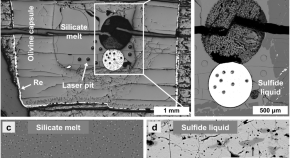
Redox control of the partitioning of platinum and palladium into magmatic sulfide liquids
High-pressure and high-temperature experiments suggest a redox-controlled partitioning behavior of platinum group elements between sulfide liquid and basaltic melt, which could help constrain the formation mechanisms of magmatic sulfide deposits
- Wanying Wang
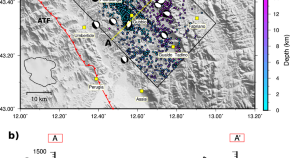
Statistically significant difference between earthquake size distributions of independent and triggered seismicity
A 3D stochastic declustering algorithm, applied to data from the dense seismic array at the Alto Tiberina Fault system, Italy, suggests the difference between earthquake size distributions of independent and triggered seismicity is not an artifact.
- Matteo Taroni
- Rodolfo Console
- Anna Eliana Pastoressa

A damage constitutive model of layered slate under the action of triaxial compression and water environment erosion
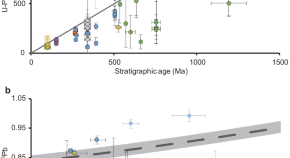
Late Paleozoic oxygenation of marine environments supported by dolomite U-Pb dating
A proxy is developed for oxygen levels in seawater, based on U-Pb dating of dolomite. It shows a step-increase in O2 400 million years ago, suggesting that oceans were largely oxygen-limited at the ‘dawn’ of animal life.
- Michal Ben-Israel
- Robert M. Holder
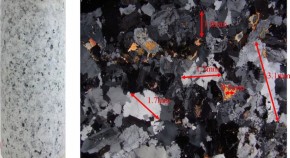
Experimental study on evaluation of density, P-wave velocity, thermal conductivity, and thermal diffusion coefficient of granite after thermal treatments by using PCA
- Changfu Huang
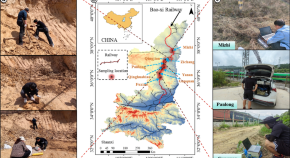
Effects of train vibration load on the structure and hydraulic properties of soils
- Jiading Wang
News and Comment
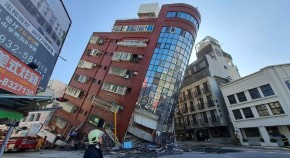
Taiwan hit by biggest earthquake in 25 years: why scientists weren’t surprised
A complex network of faults lies in the area that experienced the earthquake, and more shocks are expected.
- Gemma Conroy
The ‘Anthropocene’ is here to stay — and it’s better not as a geological epoch
- Thomas P. Roland
- Graeme T. Swindles
- Alastair Ruffell

I peer into volcanoes to see when they’ll blow
Mariton Antonia Bornas runs a Filipino volcano research and response organization.
- Margaret Simons

Are we in the Anthropocene yet?
Measurement matters, but should not detract from the reality that humans are altering Earth systems.
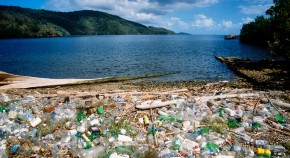
It’s final: the Anthropocene is not an epoch, despite protest over vote
Governing body upholds earlier decision by geoscientists amid drama.
- Alexandra Witze
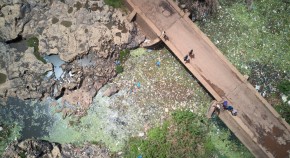
Ditching ‘Anthropocene’: why ecologists say the term still matters
Beyond stratigraphic definitions, the name has broader significance for understanding humans’ place on Earth.
Quick links
- Explore articles by subject
- Guide to authors
- Editorial policies
Prairie Research Institute
Illinois State Geological Survey
- Capabilities & Services
- Give to ISGS
- Illinois Geologic Mapping Advisory Committee
- Internships
- Office of the State Geologist
- Carbon Management
- Critical Minerals
Environmental Geology
- Great Lakes Coasts
- Height Modernization
- Hydrogen Storage
- Transportation Infrastructure
- Data Request Form
- Geological Records
- Geological Samples
ISGS Resources
Environmental site assessments.
Environmental geologic studies are an essential part of natural resources assessment, land management, and environmental protection throughout Illinois and the nation. Through these studies we can better understand environmental dynamics and anthropogenic effects on the natural environment, which include stress from changes in land uses, resource extraction, societal transportation needs, and other factors.
Natural environments have been recognized at all levels of government as areas in need of proactive management and protection to minimize and mitigate negative impacts. ISGS collaborates with many people and agencies to support an interdisciplinary and holistic approach to environmental geology. Within PRI, ISGS engages in multidisciplinary projects with other surveys, especially the Illinois State Water Survey and the Illinois Natural History Survey .
The ISGS Environmental Site Assessment program staff apply geologic and environmental expertise to identify problems and hazards to assist in land management planning and transportation infrastructure .
Like other states throughout the nation, Illinois is working toward solutions that reduce negative impacts from surface impoundments of coal combustion residuals (CCR, often called coal ash). PRI established an interdisciplinary Coal Ash Response Team to assess coal ash related information.
- CHINA GEOLOGICAL SURVEY JOURNALS
- {{subColumn.name}}
- Share facebook twitter google linkedin
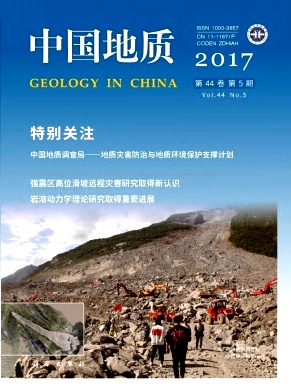
Progress and prospect of research on environmental geology of China: A review
- ZHANG Yongshuang ,
- SUN Lu ,
- YIN Xiulan ,
China Institute of Geo-environment Monitoring, Beijing 100081
- Author Bio: ZHANG Yongshuang, male, born in 1968, doctor, senior researcher, majors in engineering geology and geohazard research; E-mail: [email protected]
Environmental geology which emphasizes the entire spectrum of human interactions with the environment and aims to maintain sustainable development of human body and geological environment, has been recognized as a major concern in geology and environment research. This paper reviewed the developing process of environmental geology discipline, and discussed the significant achievements and key issues of environmental geology research in the whole world. This provides a perspective from which to propose that environmental geology research is an urgent need for geological work with the purpose of meeting the requirements of ecological civilization construction and country development. The study of the work puts forward the development direction and priorities of research areas of environmental geology in the aspects of urban environmental geology, water resource sustainable utilization and management, geological hazard monitoring and integrated control, ecological environment protection, and earth critical zone research. It is suggested that interdisciplinary research and comprehensive research on new technology and method constitute the general trend of environmental geology development, which will profoundly influence the research progress and provide better understanding of relationships between human body and geological environment, and the problem as to how to plan better to utilize resources and protect geological environment.
- environmental geology /
- resources /
- environment /
Access History
通讯作者: 陈斌, [email protected].
沈阳化工大学材料科学与工程学院 沈阳 110142
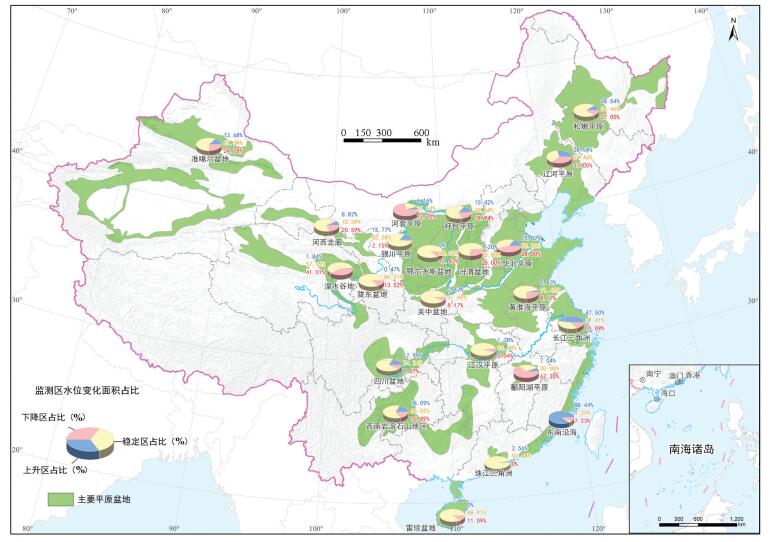
Figures ( 4 )
Article Metrics
Article views( 2217 ) PDF downloads( 1339 ) Cited by( 0 )
Other Articles By Authors
- ZHANG Yongshuang
[ - ]On This Site
[ - ]On Google
Export File
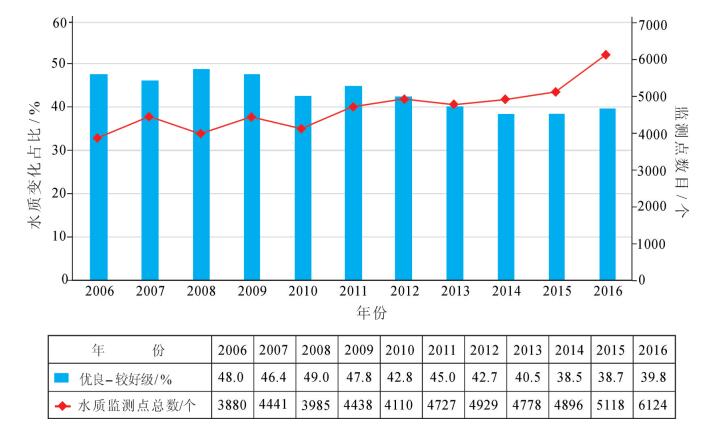
Dynamic characteristics of groundwater level in main basins of China (data up to 2016)
Trend of the groundwater quality in China in the past 10 years
Statistics of the number of the dead and missing people and damage costs induced by geo-hazard in China (after China Land & Resources Bulletin, 2011-2016)
Mine geo-environmental problems in China
Research Topics & Ideas: Environment
100+ Environmental Science Research Topics & Ideas
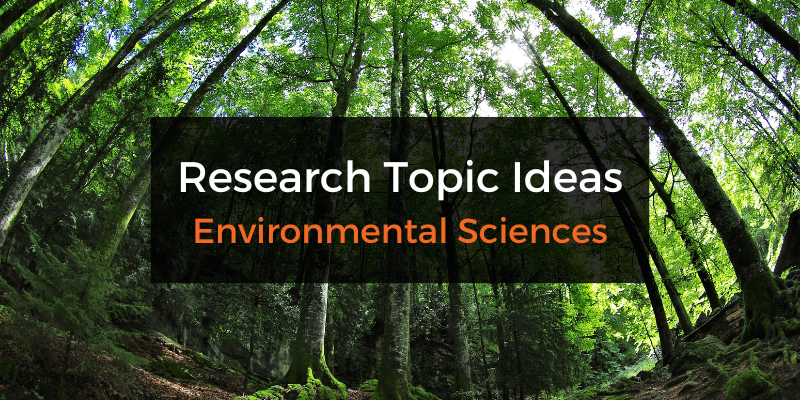
Finding and choosing a strong research topic is the critical first step when it comes to crafting a high-quality dissertation, thesis or research project. Here, we’ll explore a variety research ideas and topic thought-starters related to various environmental science disciplines, including ecology, oceanography, hydrology, geology, soil science, environmental chemistry, environmental economics, and environmental ethics.
NB – This is just the start…
The topic ideation and evaluation process has multiple steps . In this post, we’ll kickstart the process by sharing some research topic ideas within the environmental sciences. This is the starting point though. To develop a well-defined research topic, you’ll need to identify a clear and convincing research gap , along with a well-justified plan of action to fill that gap.
If you’re new to the oftentimes perplexing world of research, or if this is your first time undertaking a formal academic research project, be sure to check out our free dissertation mini-course. Also be sure to also sign up for our free webinar that explores how to develop a high-quality research topic from scratch.
Overview: Environmental Topics
- Ecology /ecological science
- Atmospheric science
- Oceanography
- Soil science
- Environmental chemistry
- Environmental economics
- Environmental ethics
- Examples of dissertations and theses
Topics & Ideas: Ecological Science
- The impact of land-use change on species diversity and ecosystem functioning in agricultural landscapes
- The role of disturbances such as fire and drought in shaping arid ecosystems
- The impact of climate change on the distribution of migratory marine species
- Investigating the role of mutualistic plant-insect relationships in maintaining ecosystem stability
- The effects of invasive plant species on ecosystem structure and function
- The impact of habitat fragmentation caused by road construction on species diversity and population dynamics in the tropics
- The role of ecosystem services in urban areas and their economic value to a developing nation
- The effectiveness of different grassland restoration techniques in degraded ecosystems
- The impact of land-use change through agriculture and urbanisation on soil microbial communities in a temperate environment
- The role of microbial diversity in ecosystem health and nutrient cycling in an African savannah
Topics & Ideas: Atmospheric Science
- The impact of climate change on atmospheric circulation patterns above tropical rainforests
- The role of atmospheric aerosols in cloud formation and precipitation above cities with high pollution levels
- The impact of agricultural land-use change on global atmospheric composition
- Investigating the role of atmospheric convection in severe weather events in the tropics
- The impact of urbanisation on regional and global atmospheric ozone levels
- The impact of sea surface temperature on atmospheric circulation and tropical cyclones
- The impact of solar flares on the Earth’s atmospheric composition
- The impact of climate change on atmospheric turbulence and air transportation safety
- The impact of stratospheric ozone depletion on atmospheric circulation and climate change
- The role of atmospheric rivers in global water supply and sea-ice formation

Topics & Ideas: Oceanography
- The impact of ocean acidification on kelp forests and biogeochemical cycles
- The role of ocean currents in distributing heat and regulating desert rain
- The impact of carbon monoxide pollution on ocean chemistry and biogeochemical cycles
- Investigating the role of ocean mixing in regulating coastal climates
- The impact of sea level rise on the resource availability of low-income coastal communities
- The impact of ocean warming on the distribution and migration patterns of marine mammals
- The impact of ocean deoxygenation on biogeochemical cycles in the arctic
- The role of ocean-atmosphere interactions in regulating rainfall in arid regions
- The impact of ocean eddies on global ocean circulation and plankton distribution
- The role of ocean-ice interactions in regulating the Earth’s climate and sea level

Tops & Ideas: Hydrology
- The impact of agricultural land-use change on water resources and hydrologic cycles in temperate regions
- The impact of agricultural groundwater availability on irrigation practices in the global south
- The impact of rising sea-surface temperatures on global precipitation patterns and water availability
- Investigating the role of wetlands in regulating water resources for riparian forests
- The impact of tropical ranches on river and stream ecosystems and water quality
- The impact of urbanisation on regional and local hydrologic cycles and water resources for agriculture
- The role of snow cover and mountain hydrology in regulating regional agricultural water resources
- The impact of drought on food security in arid and semi-arid regions
- The role of groundwater recharge in sustaining water resources in arid and semi-arid environments
- The impact of sea level rise on coastal hydrology and the quality of water resources

Topics & Ideas: Geology
- The impact of tectonic activity on the East African rift valley
- The role of mineral deposits in shaping ancient human societies
- The impact of sea-level rise on coastal geomorphology and shoreline evolution
- Investigating the role of erosion in shaping the landscape and impacting desertification
- The impact of mining on soil stability and landslide potential
- The impact of volcanic activity on incoming solar radiation and climate
- The role of geothermal energy in decarbonising the energy mix of megacities
- The impact of Earth’s magnetic field on geological processes and solar wind
- The impact of plate tectonics on the evolution of mammals
- The role of the distribution of mineral resources in shaping human societies and economies, with emphasis on sustainability
Topics & Ideas: Soil Science
- The impact of dam building on soil quality and fertility
- The role of soil organic matter in regulating nutrient cycles in agricultural land
- The impact of climate change on soil erosion and soil organic carbon storage in peatlands
- Investigating the role of above-below-ground interactions in nutrient cycling and soil health
- The impact of deforestation on soil degradation and soil fertility
- The role of soil texture and structure in regulating water and nutrient availability in boreal forests
- The impact of sustainable land management practices on soil health and soil organic matter
- The impact of wetland modification on soil structure and function
- The role of soil-atmosphere exchange and carbon sequestration in regulating regional and global climate
- The impact of salinization on soil health and crop productivity in coastal communities
Topics & Ideas: Environmental Chemistry
- The impact of cobalt mining on water quality and the fate of contaminants in the environment
- The role of atmospheric chemistry in shaping air quality and climate change
- The impact of soil chemistry on nutrient availability and plant growth in wheat monoculture
- Investigating the fate and transport of heavy metal contaminants in the environment
- The impact of climate change on biochemical cycling in tropical rainforests
- The impact of various types of land-use change on biochemical cycling
- The role of soil microbes in mediating contaminant degradation in the environment
- The impact of chemical and oil spills on freshwater and soil chemistry
- The role of atmospheric nitrogen deposition in shaping water and soil chemistry
- The impact of over-irrigation on the cycling and fate of persistent organic pollutants in the environment
Topics & Ideas: Environmental Economics
- The impact of climate change on the economies of developing nations
- The role of market-based mechanisms in promoting sustainable use of forest resources
- The impact of environmental regulations on economic growth and competitiveness
- Investigating the economic benefits and costs of ecosystem services for African countries
- The impact of renewable energy policies on regional and global energy markets
- The role of water markets in promoting sustainable water use in southern Africa
- The impact of land-use change in rural areas on regional and global economies
- The impact of environmental disasters on local and national economies
- The role of green technologies and innovation in shaping the zero-carbon transition and the knock-on effects for local economies
- The impact of environmental and natural resource policies on income distribution and poverty of rural communities
Topics & Ideas: Environmental Ethics
- The ethical foundations of environmentalism and the environmental movement regarding renewable energy
- The role of values and ethics in shaping environmental policy and decision-making in the mining industry
- The impact of cultural and religious beliefs on environmental attitudes and behaviours in first world countries
- Investigating the ethics of biodiversity conservation and the protection of endangered species in palm oil plantations
- The ethical implications of sea-level rise for future generations and vulnerable coastal populations
- The role of ethical considerations in shaping sustainable use of natural forest resources
- The impact of environmental justice on marginalized communities and environmental policies in Asia
- The ethical implications of environmental risks and decision-making under uncertainty
- The role of ethics in shaping the transition to a low-carbon, sustainable future for the construction industry
- The impact of environmental values on consumer behaviour and the marketplace: a case study of the ‘bring your own shopping bag’ policy
Examples: Real Dissertation & Thesis Topics
While the ideas we’ve presented above are a decent starting point for finding a research topic, they are fairly generic and non-specific. So, it helps to look at actual dissertations and theses to see how this all comes together.
Below, we’ve included a selection of research projects from various environmental science-related degree programs to help refine your thinking. These are actual dissertations and theses, written as part of Master’s and PhD-level programs, so they can provide some useful insight as to what a research topic looks like in practice.
- The physiology of microorganisms in enhanced biological phosphorous removal (Saunders, 2014)
- The influence of the coastal front on heavy rainfall events along the east coast (Henson, 2019)
- Forage production and diversification for climate-smart tropical and temperate silvopastures (Dibala, 2019)
- Advancing spectral induced polarization for near surface geophysical characterization (Wang, 2021)
- Assessment of Chromophoric Dissolved Organic Matter and Thamnocephalus platyurus as Tools to Monitor Cyanobacterial Bloom Development and Toxicity (Hipsher, 2019)
- Evaluating the Removal of Microcystin Variants with Powdered Activated Carbon (Juang, 2020)
- The effect of hydrological restoration on nutrient concentrations, macroinvertebrate communities, and amphibian populations in Lake Erie coastal wetlands (Berg, 2019)
- Utilizing hydrologic soil grouping to estimate corn nitrogen rate recommendations (Bean, 2019)
- Fungal Function in House Dust and Dust from the International Space Station (Bope, 2021)
- Assessing Vulnerability and the Potential for Ecosystem-based Adaptation (EbA) in Sudan’s Blue Nile Basin (Mohamed, 2022)
- A Microbial Water Quality Analysis of the Recreational Zones in the Los Angeles River of Elysian Valley, CA (Nguyen, 2019)
- Dry Season Water Quality Study on Three Recreational Sites in the San Gabriel Mountains (Vallejo, 2019)
- Wastewater Treatment Plan for Unix Packaging Adjustment of the Potential Hydrogen (PH) Evaluation of Enzymatic Activity After the Addition of Cycle Disgestase Enzyme (Miessi, 2020)
- Laying the Genetic Foundation for the Conservation of Longhorn Fairy Shrimp (Kyle, 2021).
Looking at these titles, you can probably pick up that the research topics here are quite specific and narrowly-focused , compared to the generic ones presented earlier. To create a top-notch research topic, you will need to be precise and target a specific context with specific variables of interest . In other words, you’ll need to identify a clear, well-justified research gap.
Need more help?
If you’re still feeling a bit unsure about how to find a research topic for your environmental science dissertation or research project, be sure to check out our private coaching services below, as well as our Research Topic Kickstarter .
Need a helping hand?
You Might Also Like:

research topics on climate change and environment
I wish to learn things in a more advanced but simple way and with the hopes that I am in the right place.
Thank so much for the research topics. It really helped
the guides were really helpful
Research topics on environmental geology
Thanks for the research topics….I need a research topic on Geography
I want the research on environmental planning and management
I want a topic on environmental sustainability
Submit a Comment Cancel reply
Your email address will not be published. Required fields are marked *
Save my name, email, and website in this browser for the next time I comment.
- Print Friendly
University of Rochester
Search Rochester.edu
Popular Searches
Resources for
- Prospective students
- Current students
- Faculty and staff
School of Arts & Sciences
Department of Earth and Environmental Sciences
Earth & Environmental Sciences (EES) evolved from the Geology Department that was originally founded by Herman Leroy Fairchild in 1888. EES maintains its outstanding tradition of geology research, but now also represents the full range of Geoscience research, covering the solid Earth and other planets, the oceans, and the atmosphere. It is not uncommon to see research projects in our department bridging these disciplines for holistic explorations of earth and environmental science processes and properties.
EES’s mission is to conduct scientific research and teaching of the highest order to better understand our planet, its climate, and other planetary bodies, and to prepare our students for success in an ever-changing world.
EES faculty conduct research encompassing all aspects of the Earth and the environment. From planetary formation to solid Earth processes to ocean and atmosphere dynamics, we seek to better understand the history, present, and future of Earth and planetary processes and how they affect, and are affected by, the living organisms that reside on it.
Earth and Planetary Sciences
Planetary formation.
We study the origin and evolution of planets and moons in the solar system and beyond using a unique combination of theoretical models and geochemical, geophysical, and astronomical observations. This involves research with dedicated high performance computing facilities and cutting-edge laboratories on campus. The ultimate goal is to deepen our understanding of planetary systems by comparing numerical models with geological, geophysical, geochemical and astronomical observations and to make predictions as well as suggestions for future space missions.
Paleomagnetism
We study the magnetism of natural minerals to understand the origin, evolution, and habitability of Earth and other planets of our solar system. We are currently studying the Earth’s magnetic field during the Cambrian period, ca 550 million years ago. During this time, the planet saw an explosion of life and we are investigating whether there are links between protection of Earth provided by the magnetic field and this evolutionary event.
Geochemistry
We seek to understand: (i) the evolution of planetary magmas through time; (ii) the conditions of early Earth and implications for the inception of the biosphere; (iii) secular changes in the oxidation state of magmas and fluids, and the connection between the chemical state of the crust and mantle; and (iv) non-traditional mechanisms of isotope fractionation by designing and executing high pressure/temperature laboratory experiments in which we synthesize rocks and minerals under conditions appropriate to our planet, the Moon, and other "rocky" planets in our solar system.
We use seismological techniques to extract information about Earth’s internal physical properties (velocity structure, rheology, and composition). All these, believe it or not, can be decoded from basic recordings of ground vibrations delivered from seismometers scattered across the globe that have been listening to our Earth shaking.
Sediment Transport
We use mathematical theory, numerical modeling, fieldwork, and physical experiments to better understand how landforms like rivers and hillslopes fundamentally work, with an eye toward connecting geomorphology with other fields. Ongoing research focuses on the formation of large-scale spatial patterns in arctic soils and their connection to fluid instabilities; sediment diffusion in rivers; the evolution of blocky, rocky hillslopes; and development and testing of landscape evolution models.
Oceans and Atmosphere
Climate and ice cores.
We study the atmospheric composition and climate by utilizing modeling and field observations from various atmospheric locations across the globe and glacier ice. Our research examines the various interplays between atmospheric chemistry, climate, and biogeochemical cycles. Particular focus to date has been to understand the factors that control the atmosphere’s ability to self-cleanse itself of the various air pollutants and reactive greenhouse gases injected into it by human activity and nature and to understand past changes in the methane budget.
Carbon Dynamics
We use isotope geochemistry and uranium-thorium series radionuclides to track carbon as it enters, moves within, and exits the world’s oceans to better understand the mechanisms for past and current changes in marine carbon cycling. The dynamics of related elements, such as iron, nitrogen, and manganese, are also explored with measurements conducted in the Arctic, Atlantic, and Pacific Oceans.
Biogeochemistry
We use field observations and numerical models to understand various processes concerning the biogeochemistry of the oceans and aquatic environments. This research (1) explores greenhouse gas dynamics within marine and aquatic systems to quantify feedbacks associated with global climate change, (2) investigates factors influencing the strength of the biological pump, and (3) studies the sensitivity of marine organisms to environmental change.
Paleoceanography
The Paleoceanography laboratory uses the isotopic and chemical composition of microfossils (i.e., foraminifera) and marine sediments to investigate changes in ocean circulation, ocean chemistry, and climate during the last 66 million years of Earth’s history (Cenozoic). The long-term goal of this group is to study the interactions among the oceans, the atmosphere, and the biosphere over long geological time scales to improve our ability to forecast how these interactions will evolve in the future.
Research Groups
- Atmospheric Chemistry and Climate Group
- Biochemical Oceanography Group
- Dirt, Rivers, Ice and Particles (DRIP) Lab
- Early Earth and Experimental Geochemistry Group
- Ice Core and Atmospheric Chemistry Lab
- Ocean BioGeoChemistry Group
- Paleoceanography Research Group
- Paleomagnetic Research Group
- Planetary Science Laboratory
- Seismology and Computational Geophysics
- Structural Geology and Tectonics Group
- Tracking Radioisotopes for Aquatic Chemistry and Environmental Research (TRACER) Lab

- Marine and Environmental Geology (MEG)

The Marine and Environmental Geology Program (MEG) is focused on the physical, biological and chemical interactions that characterize earth surface environments. The program includes instructional and research opportunities in a wide range of topics related to marine and tropical environments. Because of our unique geographic location and diverse ethnic population, Hawaiʻi is an excellent natural laboratory to study the interaction of humans with natural environmental systems. Special areas of emphasis include carbonate geology, coastal geology, groundwater hydrology, paleoclimatology, marine biogeochemistry, and sedimentology/stratigraphy. Although much of our research is done within the Hawaiian Islands, we also study other Pacific islands, Asia, and modern and ancient sedimentary environments around the world. The MEG program consists of three main areas of research, described below.
Research Programs
Coastal Geology : Hawaiʻi's beaches and reefs are world-renowned for their beauty; understanding the processes which shape them helps us preserve their splendor, which is an important motivation for research in this field. Studies in this program have a particular emphasis on nearshore processes, coastal sedimentation and erosion, remote sensing of reefs, geologic history of Hawaiian reefs, Pacific basin sea level history, and submarine landslides. Research also focuses on carbonate petrology and petrography to derive clues to past environmental changes as well as post-depositional geochemical changes to island limestones.
Marine Sedimentary Environments: Hawaiʻi's central location within the Pacific allows easy access to a wealth of shallow- to deep marine environments, where sediments record the history of changes in ocean chemistry and productivity and their relationships to tectonic movements and climate change. Such studies are focused on micropaleontology, geobiology, paleoceanography and paleoclimatology, organic and inorganic isotope biogeochemistry, marine authigenic minerals, carbonate sedimentology and the physical properties of sediments and crustal rocks.
Hydrogeology of Tropical Volcanic Islands: Almost all types of hydrologic environments are found in the Hawaiian Islands, ranging from near-desert conditions with annual rainfalls of less than 25 cm to Mt. Waialeale on Kauai, one of the wettest spots on Earth with rainfall of over 10m per year; from sea level tropical rain forests to snow and permafrost conditions at the top of Mauna Kea at 4200m above sea level. Human activities related to tourism and agriculture introduce additional complexities into this delicately balanced environmental system. This unique setting presents important opportunities to study groundwater transport and contaminant fate processes in the nearshore environment, groundwater modeling, and the hydro-geology of Pacific islands and atolls. Recent research includes application and assessment of groundwater models, geochemical tracers, databases and GIS, agriculural contamination and bioremediation.
Other opportunities: Many of research efforts in this program involve participation in several marine expeditions each year. Graduate students in our program are encouraged to participate in these voyages as a part of their career training. The program is multidisciplinary with cooperating faculty and courses from several other departments including Civil Engineering, Soil Sciences, Oceanography and Geography. The diverse research and teaching interests of the faculty make it possible to tailor graduate degree work to fit the needs and desires of the student.
Related Faculty
- Sloan Coats
- Henrietta Dulai
- Aly El-Kadi
- Charles "Chip" Fletcher
- Craig Glenn
- Gregory Ravizza
- Geophysics and Tectonics (G&T)
- Volcanology, Geochemistry, and Petrology (VGP)
An official website of the United States government
Here's how you know
Official websites use .gov A .gov website belongs to an official government organization in the United States.
Secure .gov websites use HTTPS. A lock ( Lock Locked padlock ) or https:// means you've safely connected to the .gov website. Share sensitive information only on official, secure websites.
REU Sites: Earth Sciences
Please report errors in the list below by writing to [email protected].
- Site Information
- Site Location
- Connect with us:
- X (Twitter)
- Redbird Scholar
CAS researchers awarded Dean’s Challenge Grant for Chicago River project
- Author By Angie Meiners
- April 9, 2024
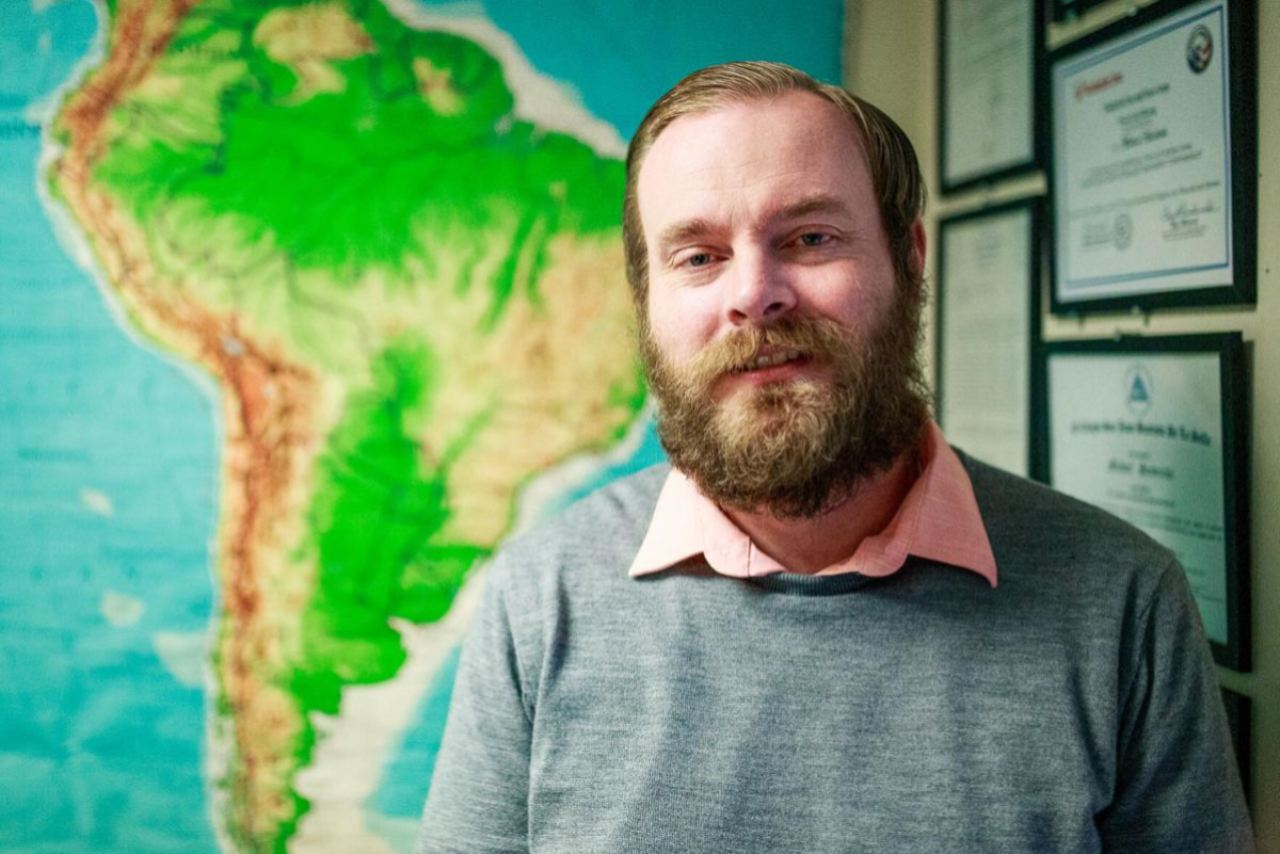
A group of Illinois State researchers have received a $6,000 College of Arts and Sciences (CAS) Dean’s Challenge Grant to research the impact of floating gardens on the Chicago River. Drs. Mike Hendricks and Noha Shawki, both of the Department of Politics and Government, received this funding in collaboration with Dr. Joan Brehm, of the Department of Sociology and Anthropology, and Drs. Eric Peterson and Alec Foster, both of the Department of Geography, Geology, and the Environment.
Their project focuses on the impact of floating gardens in the Chicago River, a green infrastructure initiative supported by Urban Rivers. These gardens aim to counter climate change effects and transform urban waterways into wildlife habitats. The study monitors the community effects, considering floating gardens as green spaces for urban populations. While highlighting ecological and social benefits, it recognizes disparities in access to green spaces, potentially exacerbated by floating garden installations.
The project emphasizes the need to understand the interplay between environmental solutions and community dynamics for effective climate change mitigation and conservation. A broader goal is to promote inclusivity, diversity, equity, access, and community engagement in green space development. They will engage with communities through science communication events using participatory action research with stakeholders. They will analyze adaptable strategies for mitigating adverse impacts and translating research into actionable solutions for equitable and sustainable access to green spaces that resonate in all contexts.
Their proposal is not just an academic endeavor; it is a holistic approach to the multifaceted challenges posed by climate change. They seek sustainable and equitable solutions, empowering communities and promoting social justice in conservation efforts and the fight against climate change.
Related Articles
- Privacy Statement
- Appropriate Use Policy
- Accessibility Resources

International Journal of Geosciences
Volumes and issues
Volume 58 july - october 2009 jul - oct 2009.
Special Issue: IAH - Commission on Mineral and Thermal Waters (CMTW), Part I
- Issue 7 October 2009
- Issue 6 September 2009
- Issue 5 September 2009
- Issue 4 August 2009
- Issue 3 August 2009
Special Issue: Current perspectives on the environmental impacts and hazards in karst (pp. 235 - 406)
- Issue 1 July 2009
Volume 57 March - June 2009 Mar - Jun 2009
- Issue 8 June 2009
- Issue 7 June 2009
Special Issue: THE DECOVALEX-THMC PROJECT (Safety assessment of nuclear waste repositories) (pp. 1217-1390)
- Issue 5 May 2009
- Issue 4 April 2009
- Issue 3 April 2009
Special Issue: Environment: Survival and Sustainability (2007) (pp. 247 - 348)
- Issue 1 March 2009
Volume 56 November 2008 - February 2009 Nov 2008 - Feb 2009
- Issue 8 February 2009
- Issue 7 February 2009
- Issue 6 January 2009
- Issue 5 January 2009
Special Issue: Monument Future: Climate Change, Air Pollution, Decay and Conservation - The Wolf-Dieter-Grimm Volume (pp. 451 - 802)
- Issue 2 November 2008
- Issue 1 November 2008

Volume 55 July - October 2008 Jul - Oct 2008
- Issue 8 October 2008
- Issue 7 October 2008
- Issue 6 September 2008
- Issue 5 September 2008
- Issue 4 August 2008
- Issue 3 August 2008
Special Issue: Groundwater Flow - selected papers from XXXIII IAH Congress, Zacatecas, Mexico (pp. 233 - 320)
- Issue 1 July 2008
Volume 54 March - June 2008 Mar - Jun 2008
Special Issue: Site Characterization for Geological Storage of C02 (pp. 1579 - 1738)
- Issue 7 June 2008
- Issue 6 May 2008
Special Issue: Advances and challenges of GIS and DBMS applications in karst ( pp. 901 - 1046)
- Issue 4 April 2008
Special Issue: Groundwater in Mediterranean Countries (pp.443-614)
- Issue 2 March 2008
- Issue 1 March 2008
Volume 53 September 2007 - February 2008 Sept 2007 - Feb 2008
- Issue 8 February 2008
- Issue 7 February 2008
- Issue 6 January 2008
Special Issue: Evaporite-Karst Processes, Landforms, and Environmental Problems (pp. 935 - 1106)
- Issue 4 December 2007
Special Issue: Groundwater vulnerability assessment and mapping (pp. 477 - 500)
- Issue 2 October 2007
- Issue 1 September 2007
Volume 52 March - August 2007 Mar - Aug 2007
- Issue 8 August 2007
- Issue 7 July 2007
- Issue 6 June 2007
- Issue 5 May 2007
- Issue 4 April 2007
- Issue 3 April 2007
Special Issue on Salt Decay
- Issue 1 March 2007
Volume 51 October 2006 - February 2007 Oct 2006 - Feb 2007
- Issue 8 February 2007
- Issue 7 February 2007
Special Issue: Systems analysis for sustainable aquifer management in semi-arid south Texas (pp. 883 - 962)
Special Issue: Cvijic Karst 2005: “Water Resources and Environmental Problems in Karst” (pp 673-796)
- Issue 4 December 2006
- Issue 3 November 2006
- Issue 2 November 2006
- Issue 1 October 2006
Volume 50 May - September 2006 May - Sept 2006
- Issue 8 September 2006
- Issue 7 August 2006
- Issue 6 August 2006
- Issue 5 July 2006
- Issue 4 July 2006
- Issue 3 June 2006
- Issue 2 May 2006
- Issue 1 May 2006
Volume 49 November 2005 - April 2006 Nov 2005 - Apr 2006
- Issue 8 April 2006
- Issue 7 April 2006
Special Issue from the International Conference on Groundwater in Geological Engineering 2003, Bled, Slovenia
- Issue 5 March 2006
- Issue 4 February 2006
- Issue 3 January 2006
- Issue 2 December 2005
- Issue 1 November 2005
Volume 48 June - October 2005 Jun - Oct 2005
- Issue 8 October 2005
- Issue 7 October 2005
- Issue 6 September 2005
- Issue 4-5 August 2005
ROSES (Risk of Susidence due to Evaporite Solution) Conference - European Commission's 4th Framework Programme of Research And Technological Development
- Issue 2 July 2005
- Issue 1 June 2005
Volume 47 December 2004 - May 2005 Dec 2004 - May 2005
- Issue 8 May 2005
- Issue 7 May 2005
- Issue 6 April 2005
- Issue 5 March 2005
- Issue 4 March 2005
- Issue 3 February 2005
- Issue 2 January 2005
- Issue 1 December 2004
Volume 46 July - November 2004 Jul - Nov 2004
Special topic: GEM - Geologic emissions of methane from lands and seafloor: mud volcanoes and observing systems
- Issue 6-7 October 2004
Special Topic: IAH CMTW Congress, Terme Olimia, Podcetrtek, Slovenia
Stone decay hazards
XXXII International Congress of IAH (International Association of Hydrogeologists) and the VI Congress of ALHSUD (Latin American Association of Groundwater Hydrology for Development), October 20-25, 2002
- Issue 1 July 2004
Volume 45 December 2003 - June 2004 Dec 2003 - Jun 2004
- Issue 8 June 2004
- Issue 7 May 2004
- Issue 6 April 2004
- Issue 5 March 2004
- Issue 4 February 2004
- Issue 3 January 2004
- Issue 2 December 2003
- Issue 1 December 2003
Volume 44 May - November 2003 May - Nov 2003
- Issue 8 November 2003
- Issue 7 October 2003
- Issue 6 September 2003
- Issue 5 August 2003
- Issue 4 July 2003
- Issue 3 June 2003
- Issue 2 June 2003
- Issue 1 May 2003
Volume 43 December 2002 - April 2003 Dec 2002 - Apr 2003
- Issue 8 April 2003
- Issue 7 March 2003
- Issue 6 March 2003
- Issue 5 February 2003
- Issue 4 February 2003
- Issue 3 January 2003
- Issue 1-2 December 2002
Volume 42 May - November 2002 May - Nov 2002
- Issue 8 November 2002
- Issue 7 October 2002
- Issue 6 September 2002
- Issue 5 August 2002
- Issue 4 July 2002
- Issue 2-3 June 2002
- Issue 1 May 2002
Volume 41 November 2001 - April 2002 Nov 2001 - Apr 2002
- Issue 8 April 2002
- Issue 7 March 2002
- Issue 6 February 2002
- Issue 5 January 2002
- Issue 3-4 December 2001
- Issue 1-2 November 2001
Volume 40 December 2000 - October 2001 Dec 2000 - Oct 2001
- Issue 11-12 October 2001
- Issue 10 September 2001
- Issue 9 August 2001
- Issue 8 June 2001
- Issue 7 May 2001
- Issue 6 March 2001
- Issue 4-5 February 2001
- Issue 3 January 2001
- Issue 1-2 December 2000
Volume 39 November 1999 - November 2000 Nov 1999 - Nov 2000
- Issue 12 November 2000
- Issue 11 October 2000
- Issue 10 September 2000
- Issue 9 July 2000
- Issue 8 June 2000
- Issue 7 May 2000
- Issue 6 April 2000
- Issue 5 March 2000
- Issue 3-4 January 2000
- Issue 2 December 1999
- Issue 1 November 1999
Volume 38 June - October 1999 Jun - Oct 1999
- Issue 4 October 1999
- Issue 3 September 1999
- Issue 2 July 1999
- Issue 1 June 1999
Volume 37 January - April 1999 Jan - Apr 1999
- Issue 4 April 1999
- Issue 3 March 1999
- Issue 1-2 January 1999
Volume 36 November - December 1998 Nov - Dec 1998
- Issue 3-4 December 1998
- Issue 1-2 November 1998
Volume 35 July - September 1998 Jul - Sept 1998
- Issue 4 September 1998
- Issue 2-3 August 1998
- Issue 1 July 1998
Volume 34 April - June 1998 Apr - Jun 1998
- Issue 4 June 1998
- Issue 2-3 May 1998
- Issue 1 April 1998
Volume 33 December 1997 - March 1998 Dec 1997 - Mar 1998
- Issue 4 March 1998
- Issue 2-3 February 1998
- Issue 1 December 1997
Volume 32 July - November 1997 Jul - Nov 1997
- Issue 4 November 1997
- Issue 3 October 1997
- Issue 2 September 1997
- Issue 1 July 1997
Volume 31 May - June 1997 May - Jun 1997
- Issue 3-4 June 1997
- Issue 1-2 May 1997
Volume 30 March - April 1997 Mar - Apr 1997
- Issue 3-4 April 1997
- Issue 1-2 March 1997
Volume 29 January - February 1997 Jan - Feb 1997
- Issue 3-4 February 1997
- Issue 1-2 January 1997
Volume 28 July - December 1996 Jul - Dec 1996
- Issue 4 December 1996
- Issue 3 October 1996
- Issue 2 September 1996
- Issue 1 July 1996
Volume 27 February - June 1996 Feb - Jun 1996
- Issue 4 June 1996
- Issue 3 April 1996
- Issue 2 March 1996
- Issue 1 February 1996
Volume 26 July - December 1995 Jul - Dec 1995
- Issue 4 December 1995
- Issue 3 October 1995
- Issue 2 September 1995
- Issue 1 July 1995
Volume 25 February - June 1995 Feb - Jun 1995
- Issue 4 June 1995
- Issue 3 April 1995
- Issue 2 March 1995
- Issue 1 February 1995
Volume 24 August - December 1994 Aug - Dec 1994
- Issue 4 December 1994
- Issue 3 November 1994
- Issue 2 October 1994
- Issue 1 August 1994
Volume 23 February - June 1994 Feb - Jun 1994
- Issue 4 June 1994
- Issue 3 April 1994
- Issue 2 March 1994
- Issue 1 February 1994
Volume 22 September - December 1993 Sept - Dec 1993
- Issue 4 December 1993
- Issue 3 November 1993
- Issue 2 October 1993
- Issue 1 September 1993
Volume 21 April - August 1993 Apr - Aug 1993
- Issue 4 August 1993
Environmental change in karst areas
- Issue 1-2 April 1993
Volume 20 July - November 1992 Jul - Nov 1992
- Issue 3 November 1992
- Issue 2 September 1992
- Issue 1 July 1992
Volume 19 January - May 1992 Jan - May 1992
- Issue 3 May 1992
- Issue 2 March 1992
- Issue 1 January 1992
Volume 18 July - November 1991 Jul - Nov 1991
- Issue 3 November 1991
- Issue 2 September 1991
- Issue 1 July 1991
Volume 17 January - May 1991 Jan - May 1991
- Issue 3 May 1991
- Issue 2 March 1991
- Issue 1 January 1991
Volume 16 July - November 1990 Jul - Nov 1990
- Issue 3 November 1990
- Issue 2 September 1990
- Issue 1 July 1990
Volume 15 January - May 1990 Jan - May 1990
- Issue 3 May 1990
- Issue 2 March 1990
- Issue 1 January 1990
Volume 14 July - November 1989 Jul - Nov 1989
- Issue 3 November 1989
- Issue 2 September 1989
- Issue 1 July 1989
Volume 13 January - May 1989 Jan - May 1989
- Issue 3 May 1989
- Issue 2 March 1989
- Issue 1 January 1989
Volume 12 August - December 1988 Aug - Dec 1988
- Issue 3 December 1988
- Issue 2 October 1988
- Issue 1 August 1988
Volume 11 February - June 1988 Feb - Jun 1988
- Issue 3 June 1988
- Issue 2 April 1988
- Issue 1 February 1988
Volume 10 February - October 1987 Feb - Oct 1987
- Issue 3 October 1987
- Issue 2 June 1987
- Issue 1 February 1987
Volume 9 February 1986 - October 1987 Feb 1986 - Oct 1987
- Issue 1 February 1986
Volume 8 March - December 1986 Mar - Dec 1986
- Issue 4 December 1986
- Issue 3 September 1986
- Issue 1-2 March 1986
Volume 7 March - December 1985 Mar - Dec 1985
- Issue 4 December 1985
- Issue 3 September 1985
- Issue 1-2 March 1985
Volume 6 March - December 1984 Mar - Dec 1984
- Issue 4 December 1984
- Issue 3 September 1984
- Issue 2 June 1984
- Issue 1 March 1984
Volume 5 March - December 1983 Mar - Dec 1983
- Issue 4 December 1983
- Issue 3 September 1983
- Issue 2 June 1983
- Issue 1 March 1983
Volume 4 March - September 1982 Mar - Sept 1982
- Issue 3-4 September 1982
- Issue 2 June 1982
- Issue 1 March 1982
Volume 3 January 1979 - November 1981 Jan 1979 - Nov 1981
- Issue 6 November 1981
- Issue 5 September 1981
- Issue 4 July 1981
- Issue 3 May 1980
- Issue 2 March 1980
- Issue 1 January 1979
Volume 2 January 1977 - November 1978 Jan 1977 - Nov 1978
- Issue 6 November 1978
- Issue 5 September 1978
- Issue 4 July 1978
- Issue 3 May 1978
- Issue 2 March 1978
- Issue 1 January 1977
Volume 1 January 1975 - November 1977 Jan 1975 - Nov 1977
- Issue 6 November 1977
- Issue 5 September 1976
- Issue 4 July 1976
- Issue 3 May 1975
- Issue 2 March 1975
- Issue 1 January 1975
- Find a journal
- Publish with us
- Track your research
Search Postings
- On Campus 1
- Graduate Assistantships 1
- Normal, Illinois 1
GA Research - Geography, Geology and the Environment - FY25
Title: GA Research - Geography, Geology and the Environment - FY25 Division Name: Academic Affairs Department: Geography, Geology, and the Environment Campus Location: Normal, IL
Job Summary
Graduate research assistants are generally assigned to individual faculty members to assist with their research, and the majority of the assigned duties are tied to this research. The nature of the assistance varies by discipline and can involve a variety of activities such as: 1. Library work 2. Proposal writing 3. Data gathering 4. Data analysis This position will assist faculty with grant related research.
Salary Rate / Pay Rate
Per offer letter
Required Qualifications
1. Must be an admitted degree seeking graduate student in Hydrogeology Master's program at Illinois State University 2. BS in Geology or related discipline 3. Eligible for appointment as per the requirements in the Graduate Assistant Handbook which can be found at http://hr.illinoisstate.edu/downloads/GA_Handbook.pdf 4. Must be registered for at least 3 credit hours during the summer semester.
Will be determined by the supervising faculty.
Proposed Starting Date
Per specific offer letter or to be determined by supervising faculty
Required Applicant Documents
Resume, Cover letter, Reference List
Please Note : These documents are required to be submitted online in order to complete the application process. Please have these documents ready prior to clicking on "Apply"
Special Instructions for Applicants
Note: If you have not yet been assigned a University ID, but are interested in applying for this graduate assistantship, please proceed with the graduate assistant application process. For the first question regarding your University ID, simply enter in nine (9) zeros (e.g., 000000000). You must be eligible for employment in the United States and at Illinois State University and/or for the number of hours required for the position. Illinois State University student employees are restricted to no more than 28 hours per week of on-campus employment for all positions held. International students are restricted by their visa status to no more than 20 hours per week of on-campus employment when the university is in session but may work up to 28 hours per week when the university is not in session. Please contact the Office of International Student and Scholar Services for guidance on visa restrictions on work hours. The University cannot grant exceptions to visa status rules/laws.
Contact Information for Applicants
Laura Roethle, [email protected]
Important Information for Applicants
This position is subject to a criminal background investigation and if applicable, an employment history review, based on University Policy 3.1.30 and any offer of employment is contingent upon you passing a satisfactory criminal background investigation and/or an employment history review. You may not begin work until the criminal background investigation results have been received and cleared by Human Resources.
Illinois State University is an Equal Opportunity/Affirmative Action Employer. All qualified applicants will receive consideration for employment without regard to race, color, religion, sex, sexual orientation, gender identity, national origin, disability, or status as a protected veteran.
If you are an individual with a disability and need a reasonable accommodation under the Americans with Disabilities Act (ADA) or other state or federal law you may request an accommodation by contacting the Office of Equal Opportunity and Access at (309) 438-3383 . The Office of Equal Opportunity and Access will hold any confidential information you provide in confidence.
If you are having difficulty accessing the system, please call Human Resources at (309) 438-8311 .
Application Opened: 04/10/2024 09:00 AM CST Application Closes:
We will email you new jobs that match this search.
Great, we can send you jobs like this, if this is your first time signing up, please check your inbox to confirm your subscription.
The email address was invalid, please check for errors.
You must agree to the privacy statement
Current Opportunities
Powered by PageUp
University Resources

IMAGES
VIDEO
COMMENTS
Environmental geology is a subset of environmental science, which is the study of the interaction of humans with all aspects of their environment - physical, ... Very soon the global change science research became the mainstream of international environmental science, and a new discipline was formed, called "global change science." ...
Environmental Geology is about the interface between geological processes and the environment, and we can choose to use a broad definition of "the environment". In this textbook that covers all types of Earth Systems, including systems involving the biosphere (or ecosystems if you like); systems of the hydrosphere and atmosphere, such as ...
Environmental geology, like hydrogeology, is an applied science concerned with the practical application of the principles of geology in the solving of environmental problems created by man. It is a multidisciplinary field that is closely related to engineering geology and, to a lesser extent, to environmental geography . [1]
Environmental geology, field concerned with applying the findings of geologic research to the problems of land use and civil engineering. It is closely allied with urban geology and deals with the impact of human activities on the physical environment (e.g., contamination of water resources by
Environmental geology involves application of geological knowledge to the investigation of processes occurring at or near Earth's surface in order to mitigate natural hazards and minimize environmental degradation. ... Environmental geology has largely developed as a subdiscipline within geology since the 1970s, although research related to ...
Nature Geoscience ( Nat. Geosci.) ISSN 1752-0908 (online) ISSN 1752-0894 (print) Nature Geoscience covers all aspects of the Earth sciences, including theoretical research, modelling, and field work.
Progress in Environmental Geography aspires to be the peer-review journal of choice for those wanting to know about the state of the art in all areas of environmental geography research - philosophical, theoretical, thematic, methodological and empirical. Concerned primarily with critical reviews of current research, PiEG will enable a space for debate about questions, concepts and findings ...
Connecting geology to ecology. Nature Geoscience 17 , 173 ( 2024) Cite this article. Understanding the ecosystem response to global environmental change requires consideration of geological ...
Environmental Geology places these different factors into perspective so that scientists, politicians, economists, planners, and stakeholders can work together to develop solutions that provide an acceptable balance between development and the environmental services on which we all depend. ... Advances in Research in Karst Media.
Environmental geology is the discipline which brings together these issues in a holistic approach to land use planning and utilization. This section of the encyclopedia examines some of the problems, techniques, and solutions for managing resources so the balance between development and the environment can be preserved.
Geology is broadly the study of the Earth and other planets, moons, and smaller planetary bodies. Fields of geology range from the initial formation and differentiation of the Earth to modern ...
He engages with 20 research grants as a PI or CoPI received from national and international funding bodies in environmental research. Amjad Kallel: Dr. Amjad Kallel is currently an associate professor of Environmental Geology in the Sfax National School of Engineers at the University of Sfax, Tunisia.
Natural environments have been recognized at all levels of government as areas in need of proactive management and protection to minimize and mitigate negative impacts. ISGS collaborates with many people and agencies to support an interdisciplinary and holistic approach to environmental geology. Within PRI, ISGS engages in multidisciplinary ...
Environmental and Engineering Geology and Geophysics is the study of fundamental geological and geophysical processes that shape and impact the environment, as well as the engineering applications that assess and mitigate potential environmental impacts. Research and learning in these areas includes topics such as natural hazard assessment and ...
Publish Date: 25 October 2017. Abstract. Environmental geology which emphasizes the entire spectrum of human interactions with the environment and aims to maintain sustainable development of human body and geological environment, has been recognized as a major concern in geology and environment research. This paper reviewed the developing ...
A mega list of research topic ideas in environmental sciences, including ecology, oceanography, hydrology, geology, soil science and more. About Us; Services. 1-On-1 Coaching. ... Research topics on environmental geology. Reply. Blessing on March 2, 2024 at 12:03 pm Thanks for the research topics….I need a research topic on Geography ...
History. Earth & Environmental Sciences (EES) evolved from the Geology Department that was originally founded by Herman Leroy Fairchild in 1888. EES maintains its outstanding tradition of geology research, but now also represents the full range of Geoscience research, covering the solid Earth and other planets, the oceans, and the atmosphere.
Research in this area focuses on geochemical processes at the interface of Earth and life, including everything from microbial and human activities to ecosystems. Biogeochemical processes in natural Earth systems, and anthropogenic impacts on them, are investigated through geochemical and isotopic tracers for a variety of chemical constituents, including potential contaminants, combined with ...
Global society's insatiable demand for natural resources since the industrial revolution has led to myriads of environmental consequences. Concerned citizens have called for a carbon-neutral and sustainable future. In light of this trend, the aims and scope of the Environmental Earth Sciences (EES) journal are being revisited and revised. Founded as the "Environmental Geology" journal ...
The Marine and Environmental Geology Program (MEG) is focused on the physical, biological and chemical interactions that characterize earth surface environments. The program includes instructional and research opportunities in a wide range of topics related to marine and tropical environments. Because of our unique geographic location and ...
Research Topics/Keywords: Structural geology, earthquake geology, tectonics, arctic geology, geologic mapping, metamorphic geology, fault rocks, Earth sciences, international. Comments: Includes 5 weeks of summer field research in Sisimiut, Greenland. REU includes a 6-week pre-field online course and 6-week, post-field online course. Both online components will meet virtually once per week.
H: Environment & Environmental geology. Global Journal of Science Frontier Research: (H) Environment & Earth is an international journal for publishing natural science research papers. It aims to encourage and provide international publication to researchers, scientists, and professors of natural science. We welcome original researches, surveys ...
A group of Illinois State researchers have received a $6,000 College of Arts and Sciences Dean's Challenge Grant to research the impact of floating gardens on the Chicago River. Drs. Mike Hendricks and Noha Shawki, both of the Department of Politics and Government, received this funding in collaboration with Dr. Joan Brehm, of the Department of Sociology and Anthropology, and Drs. Eric ...
Volume 46 July - November 2004. Issue 8 November 2004. Special topic: GEM - Geologic emissions of methane from lands and seafloor: mud volcanoes and observing systems. Issue 6-7 October 2004. Issue 5 September 2004. Special Topic: IAH CMTW Congress, Terme Olimia, Podcetrtek, Slovenia. Issue 3-4 August 2004.
Job no: 518461 Work type: On Campus Location: Normal, Illinois Title: GA Research - Geography, Geology and the Environment - FY25 Division Name: Academic Affairs Department: Geography, Geology, and the Environment Campus Location: Normal, IL Job Summary. Graduate research assistants are generally assigned to individual faculty members to assist with their research, and the majority of the ...